Last updated on November 26th, 2024
Featured image: Celebrating New Year’s Eve in the Sahara Desert was one of the most memorable New Year’s to date | Photo by Rubén Bagüés on Unsplash
New Year’s Eve in the Sahara Desert? Why not!
by Carolyn Ray
In December 2014, I spent two weeks travelling around the Kingdom of Morocco: Casablanca, Fez, Rabat, Menkes, Marrakech, Chefchaouen and places in between. As part of the itinerary, I planned a night in the Sahara Desert on New Year’s Eve, visualizing a luxurious tent, starry skies, warm breezes and candlelight. Who wouldn’t want to spend a magical night in the folds of this mystical desert?
The reality was quite different, but nevertheless, it remains one of the most memorable New Year’s to date.
Join us: Get stories like this delivered directly to your inbox! Sign up for the newsletter here!
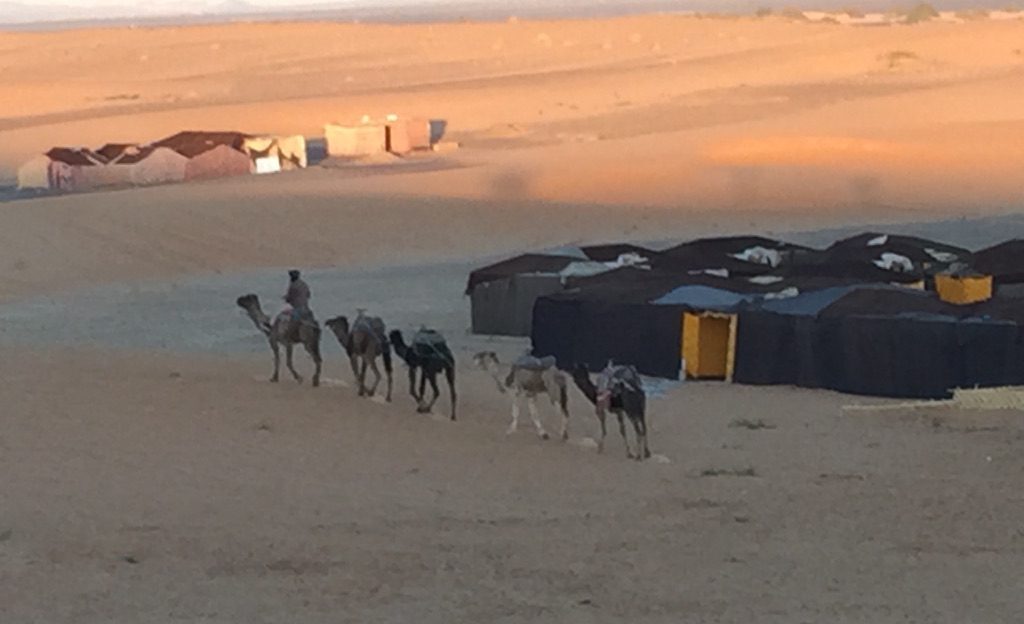
The morning of December 31
Our journey began in Merzouga, at the Erg Chebbi dunes, along the Algerian border. These giant hills of smooth sand are famous for their great height and size and are one of the greatest sights of Morocco. Historically, getting to the dunes was incredibly challenging, as travellers had to pass through some of the flattest and most barren areas imaginable as they followed the Saharan Caravan Route to carry salts, gold, slaves, and spices to Timbuktu.
After some off-roading and dry, dusty roads in our 4×4, we arrived at our hotel, changed into warmer clothes, and hopped on our new transportation. Our caravan of about 10 camels began its 90-minute trek to the campsite.
On the outskirts of the massive sand dunes, it seems barren and lifeless. But once you enter the desert, all discomfort is forgotten. It is awe-inspiring.
All I could see was a sea of sand. These ever-changing shapes carved by centuries of relentless winds, and a spectrum of colours reflected the warmth and diversity of the light, constantly shifting and evolving.
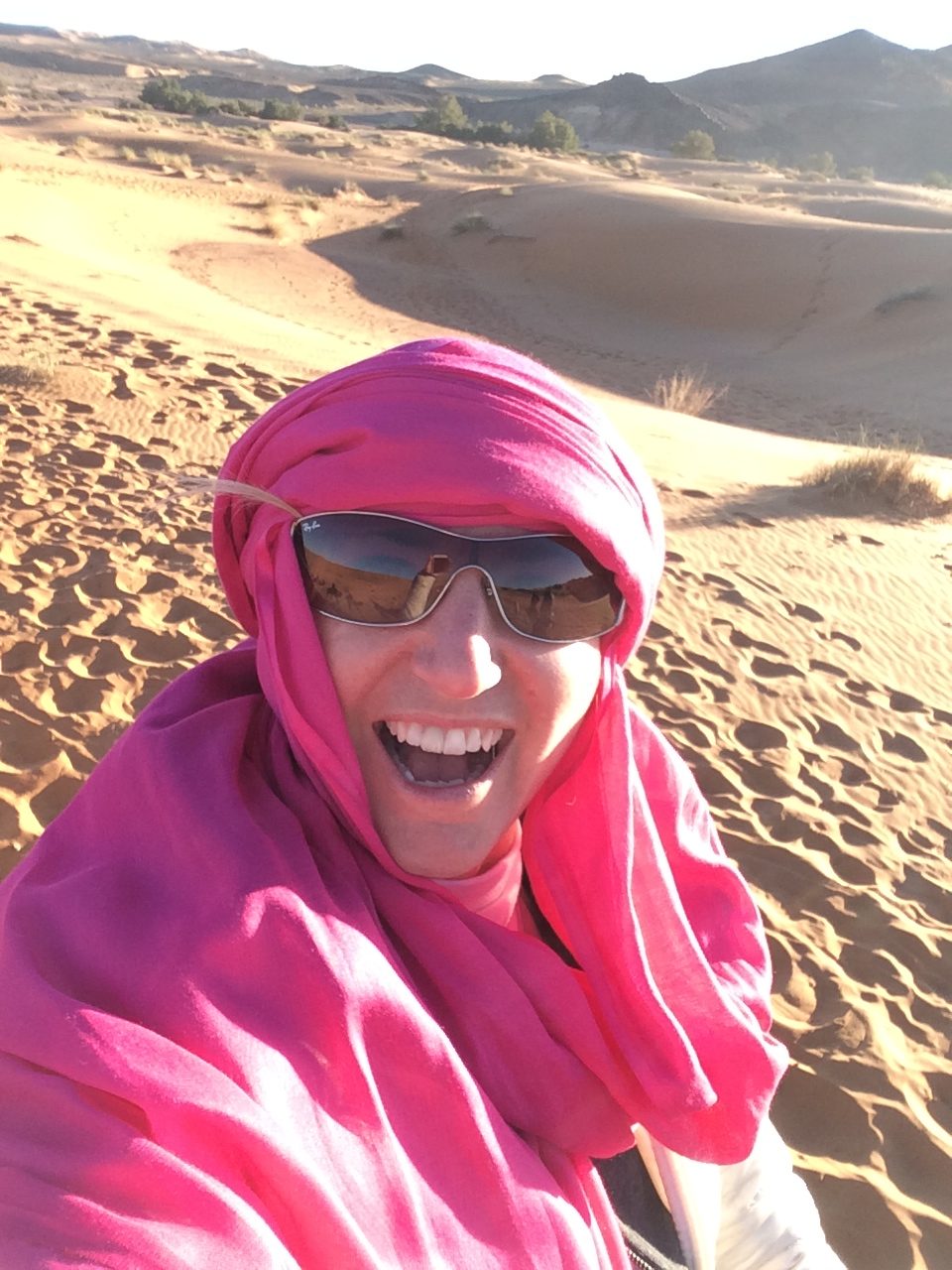
Just as the sun was setting, our caravan arrived at our destination – a berber tent set in at the base of the dunes. We paused and enjoyed the warmth of the golden sun glimmering on the sculpted sands.
Just before sunrise, we were awakened by our guides to ride our camels across the frosty dunes to return to the hotel. As the warmth of the sun flooded into our faces, we were reminded of the power of human endeavour and grateful for the opportunity to connect with the earth in a way very few experience. A magical experience indeed!
Sunset changed everything
As the sun went down, the temperature dropped. Clearly, hoodies were not going to suffice. As darkness descended, we scurried off to claim a room in the large tent complex.
Soon, we discovered an empty tent with a bed covered in two wool blankets, with a blanket as a door. By this time, the temperature was close to zero. The only heat in the room would come from us. As I gazed at the contents of my backpack, I realized that this would not be a night for sheer lingerie. Indeed, I had not brought anything remotely appropriate for a freezing night in the Sahara Desert.
Desperately seeking warmth, I headed for the campfire hoping to soothe my sore limbs, along with about 60 other explorers from multiple countries. I was dressed warmly but there was no question that we were ill-prepared without wool socks, gloves or hats. I was immensely grateful for my large Moroccan scarf.
Read More: Her Tips to Travel Solo Safely in Morocco
Grateful for the campfire
Throughout the evening, we were entertained by the Berber folk musicians around the campfire. English was definitely the minority language, as we shared tagine and stories with our fellow adventurers from Spain, France, South America, Portugal, Italy and Germany.
Just before sunrise, we were awakened by our guides to ride our camels across the frosty dunes to return to civilization. As the warmth of the sun flooded into our faces, I was reminded of the power of human endeavour and grateful for the opportunity to connect with people from other cultures in a way very few experience. What has your most magical New Year’s Eve been?
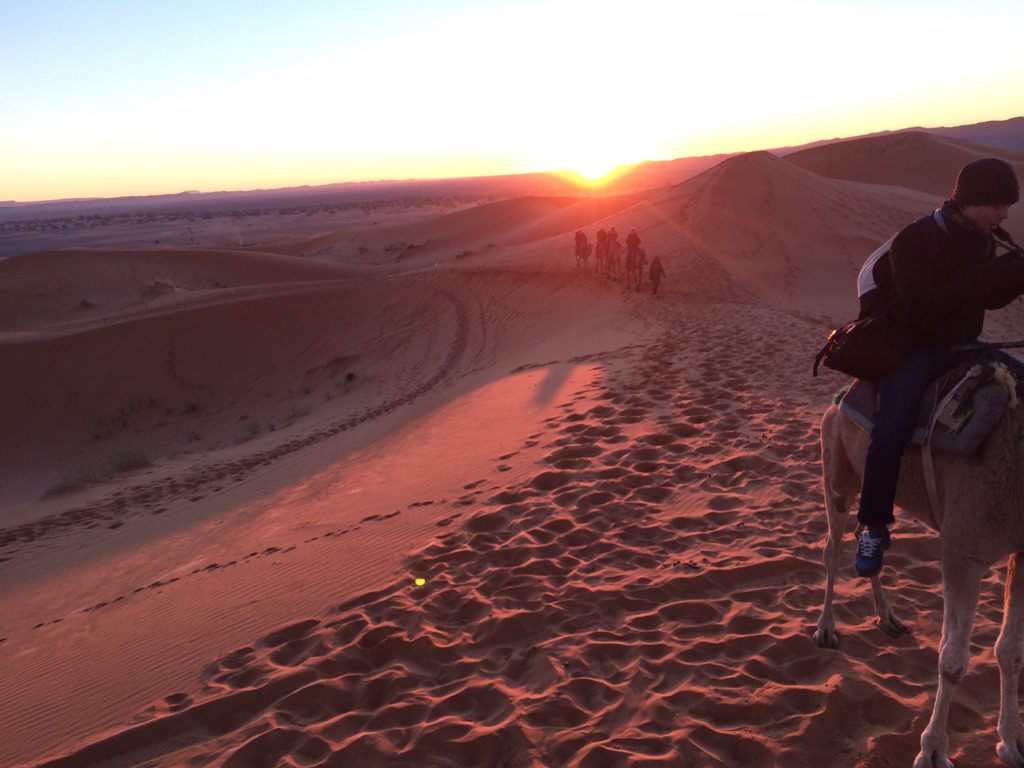
Other places to visit in Morocco
(Photos are my own; if you’d like my itinerary or recommendations let me know)
The Ksar of Ait-Ben-Haddou
Located in the foothills on the southern slopes of the High Atlas in the Province of Ouarzazate, the site of Ait-Ben-Haddou is the most famous ksar in the Ounila Valley in southern Morocco, illustrating the main types of earthen constructions that may be observed dating from the 17th century in the valleys of Dra, Todgha, Dadès and Souss. (Source: UNESCO World Heritage Site)
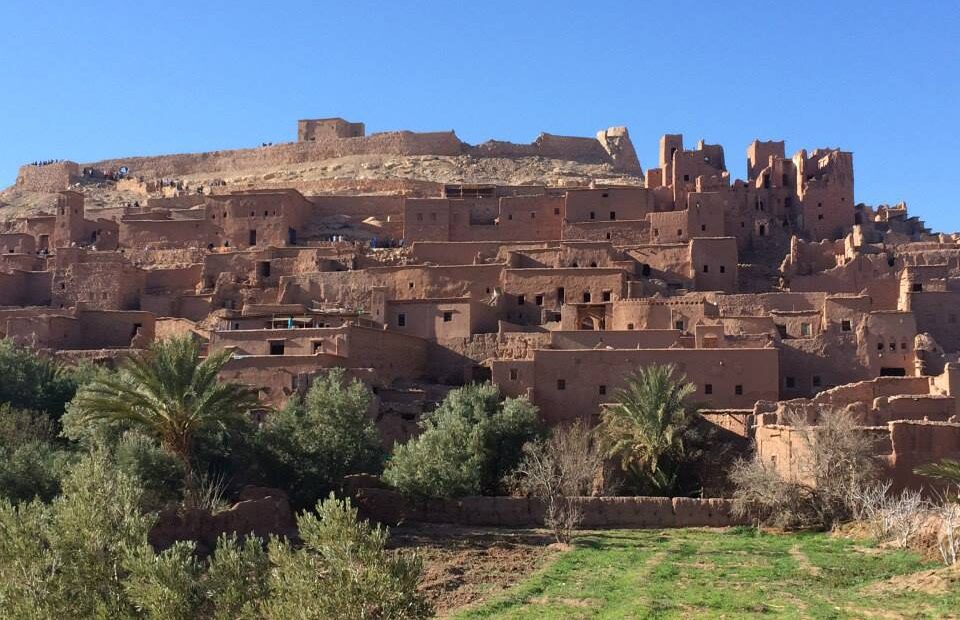
Rabat
Rabat, Arabic Ribāṭ, is the capital of Morocco and one of the country’s four imperial cities, located on the Atlantic coast in the north-west of Morocco. Built under the French Protectorate from 1912 to the 1930s, it includes royal and administrative areas, residential and commercial developments and the Jardins d’Essais botanical and pleasure gardens. The older parts include Hassan Mosque (begun in 1184) and the Almohad ramparts and gates, the only surviving parts of the project for a great capital city of the Almohad caliphate as well as remains from the Moorish, or Andalusian, principality of the 17thcentury.ced settings. (Source: UNESCO World Heritage site)
Hassan II Mosque, Casablanca
This is the largest functioning mosque in Africa and is the 7th largest in the world. Completed in 1993, it was designed by Michel Pinseau under the guidance of King Hassan II and built by Moroccan artisans from all over the kingdom. (Source: Wikipedia)
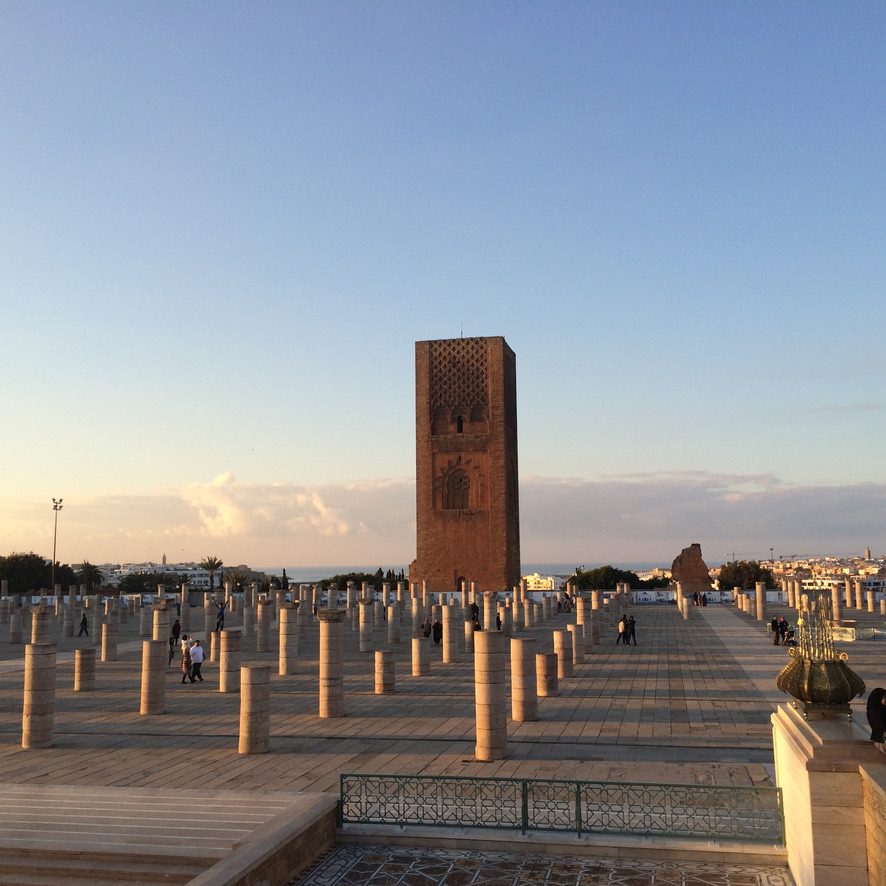
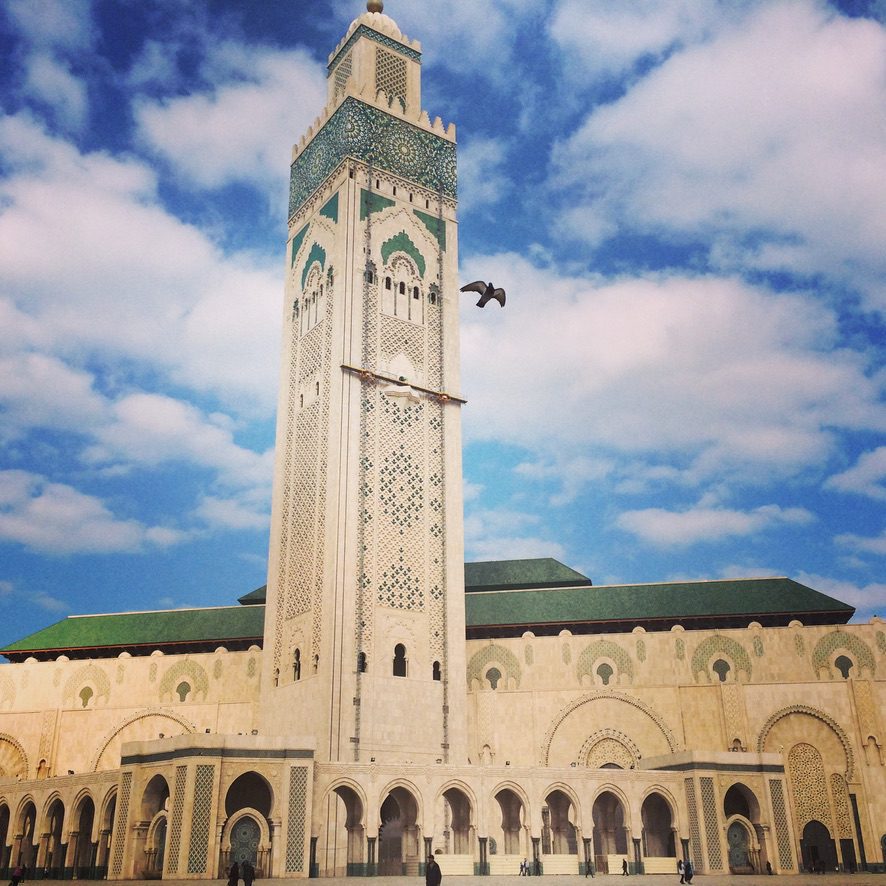
Fez
Fez is simply a place that can’t be missed in Morocco, but don’t go inside the medina without a trusted guide. Numerous leather shops surround the vats where leather is cured and coloured. It’s also a great place to see ceramics, if leather isn’t your thing.
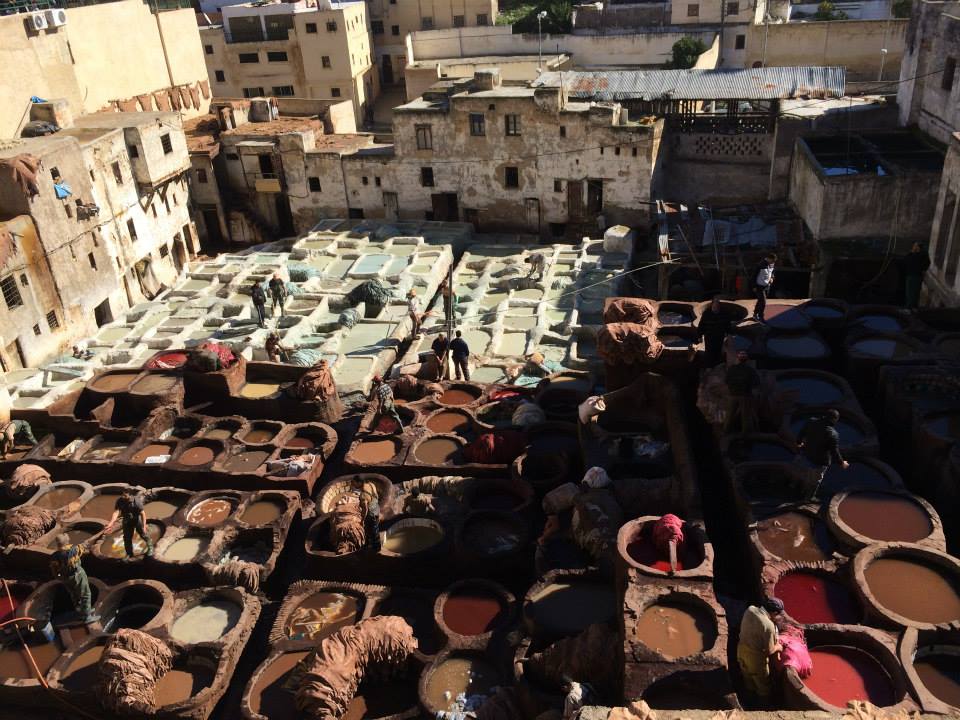
Fez medina
Chefchaouen
Located in northwest Morocco near Tangier, Chefchaouen is known for its blue-washed buildings, mountains and hiking. It’s a dry town, so bring your own wine!
Menkes
Meknes is one of the four Imperial cities of Morocco, founded in the 11th century as a military settlement. Worth a day trip from Fez to see the Kasbah of Moulay Ismail (Source: Wikipedia)
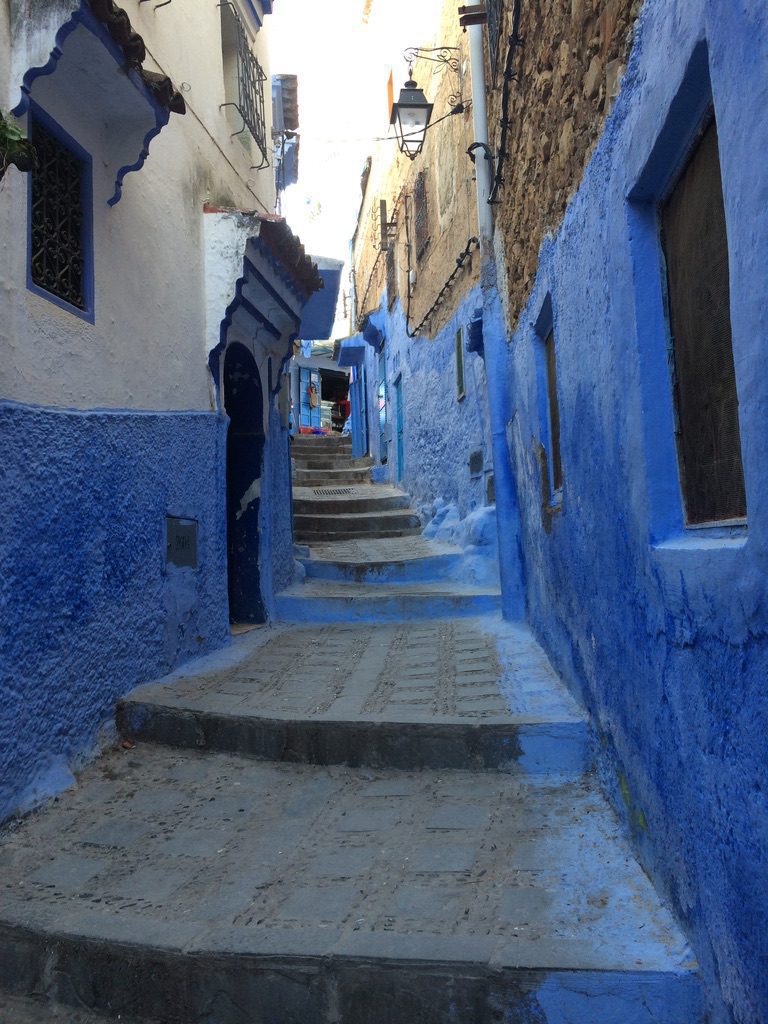
Chefchaouen, known for its blue-washed buildings
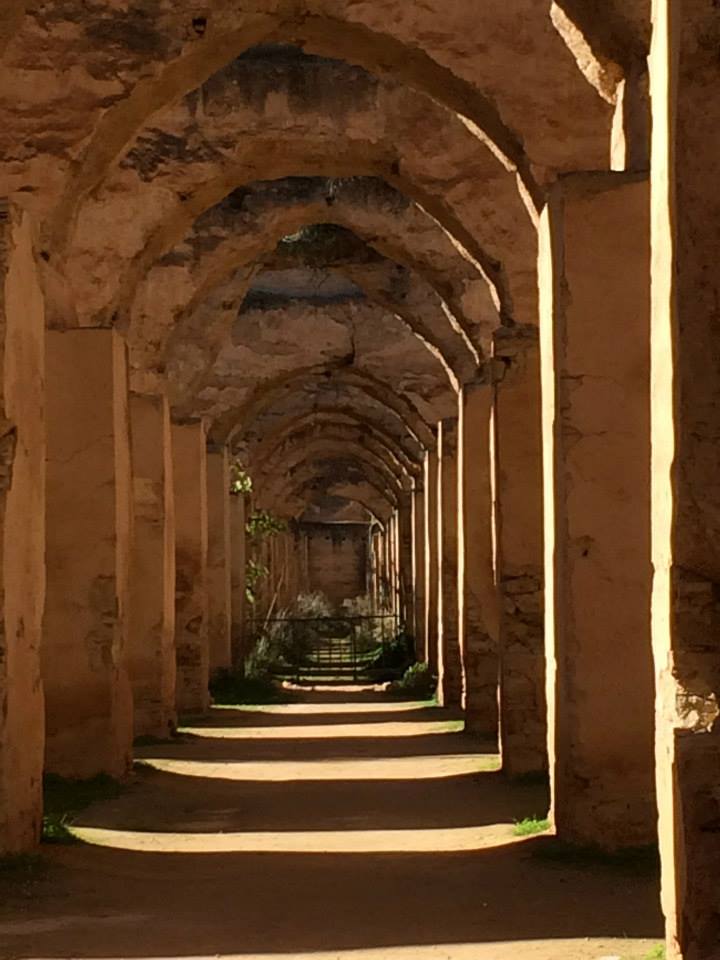
Volubilis
Near Menkes, Volubilis is a partly excavated Berber city commonly considered the ancient capital of the kingdom of Mauretania.

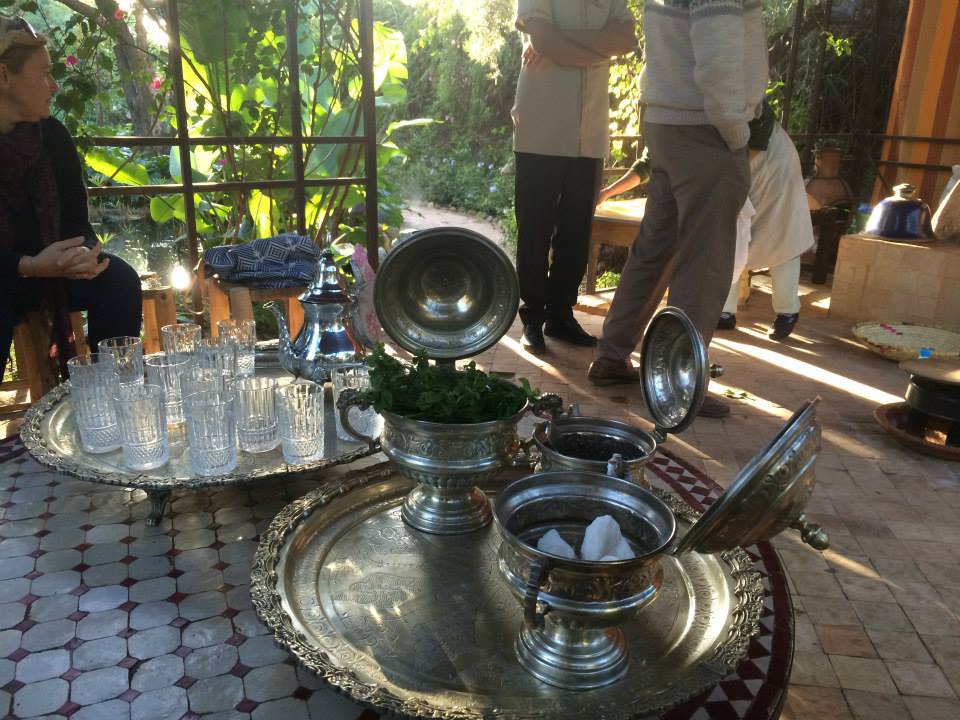
A traditional tea service at the La Maison Arabe Marrakesh
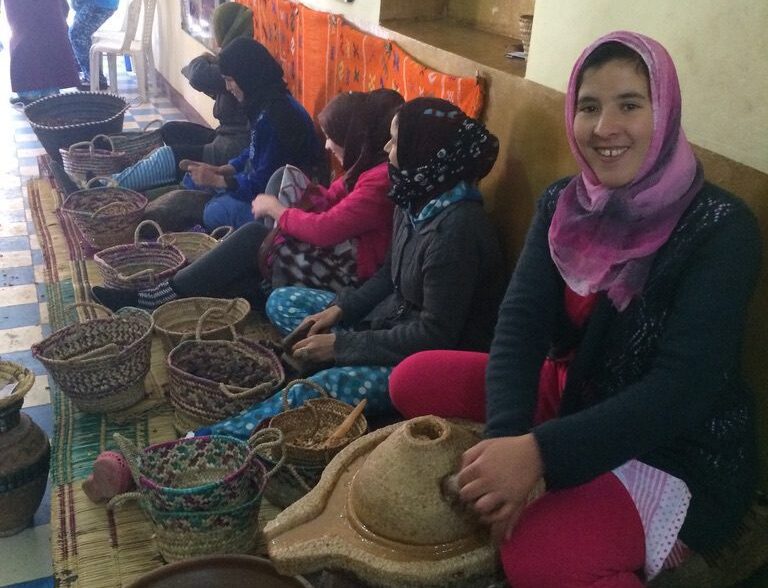
Women making argan oil in the Atlas Mountains
More to Discover From Morocco
Is 85 Too Old to Travel Internationally? A Trip to Essaouira, Morocco Shows It’s Not
An injury at age 85 made me rethink travelling, but a trip to Essaouira, Morocco showed me I could return to travel with confidence.
Maria Dueñas’ Wartime Spy Novel “The Time In Between” Travels Back to 1930s Tangiers
In Maria Duenas’ “The Time In Between”, we learn about the Spanish Civil War from the perspective of a seamstress turned skillful spy.
Africa’s Secret Places: Less-Travelled Destinations for Solo Women
With 54 sovereign countries, the African continent offers solo women vibrant communities, a range of wildlife and diverse cultures.





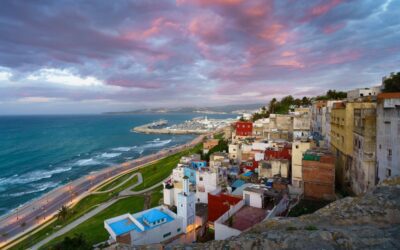

0 Comments
We always strive to use real photos from our own adventures, provided by the guest writer or from our personal travels. However, in some cases, due to photo quality, we must use stock photography. If you have any questions about the photography please let us know.
Disclaimer: We are so happy that you are checking out this page right now! We only recommend things that are suggested by our community, or through our own experience, that we believe will be helpful and practical for you. Some of our pages contain links, which means we’re part of an affiliate program for the product being mentioned. Should you decide to purchase a product using a link from on our site, JourneyWoman may earn a small commission from the retailer, which helps us maintain our beautiful website. JourneyWoman is an Amazon Associate and earns from qualifying purchases. Thank you!
We want to hear what you think about this article, and we welcome any updates or changes to improve it. You can comment below, or send an email to us at [email protected].